Double Eyelid Creation in Panama
Search and Compare the Best Clinics and Doctors at the Lowest Prices for Double Eyelid Creation in Panama

Find the best clinics for Double Eyelid Creation in Panama
No clinics available
Thailand offers the best prices Worldwide
Price: $ 220

- Home
- Panama
Compare Before & After Photos of _procedure_photos.phpDouble Eyelid Creation


Front view
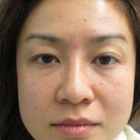

Front view
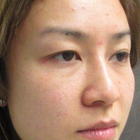
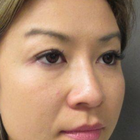
Half-side view
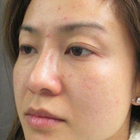

Half-side view
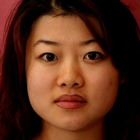
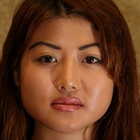
Front view

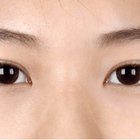
Front view
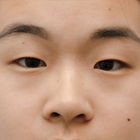
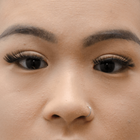
Front view
WHY US?
At Medijump, we're making medical easy. You can search, compare, discuss, and book your medical all in one place. We open the door to the best medical providers worldwide, saving you time and energy along the way, and it's all for FREE, no hidden fees, and no price markups guaranteed. So what are you waiting for?

Free

Best Price

Widest Selection

Risk-Free
What you need to know about Double Eyelid Creation in Panama

Also known as Blepharoplasty. This form of plastic surgery is used to correct defects of the eyelids or for aesthetically modifying the eye region of the face. It involves the removal of excess skin and fat from around the eyes and the reinforcement of the corresponding muscle and tendon tissues and is centered around the area between the eyebrow and the upper portion of the cheek. Double eyelid surgery creates a crease that makes the eyes appear larger and more alert. While Caucasians typically are born with a double eyelid crease, approximately 50% of East-Asians do not have a double eyelid crease. Therefore, double eyelid surgery is a highly specialized procedure performed mainly on persons of East-Asian descent. It is the most common type of plastic surgery performed in South Korea, Taiwan, and Hong Kong.
Double eyelid surgery is a safe and versatile surgery for Asians and other patients with monolids. The surgery makes the eyes appear larger and gives them a more alert appearance. There are different techniques that can be customized to achieve the desired results, tailored for each individual patient. Potential patients should consult with a board-certified plastic surgeon to determine which double eyelid surgery technique is the best option to achieve their desired results.
What is the cost of Double Eyelid Creation in Panama?
Deciding to go through with the Double Eyelid Creation can depend largely on the financial implications. The expenses associated with such an undertaking can fluctuate considerably due to varying factors. These could include the proficiency level of the surgeon, the complexity of the procedure, and usual prices within the region. Contact your local clinic for more information.
It's vital to remember that a majority of insurance firms do not cover aesthetic procedures such as the Double Eyelid Creation. This is due to the fact that such procedures are generally viewed as elective and not critical for maintaining health. Consequently, these costs are not factored in by health insurance companies. Hence, those who are contemplating this should seriously consider their financial situation and organize their resources accordingly.
What does a Double Eyelid Creation Procedure Involve?
Surgery is performed under local anesthesia and sedation will help you avoid pain and discomfort associated with the surgery. The Doctor draws pre-operative lines on your eyelids and incisions are made along your natural creases, as these creases hide your scars after you recover. If the surgery is planned for both the upper and lower eyelids, the upper eyelid is treated first. Excessive fat, skin, and muscle are removed through this incision and then it is stitched. The same procedure is repeated on the lower eyelid. Sometimes, incisions are made inside your eyelids, this is usually an option for dark-skinned people as white scars look prominent on their skin. Inside incisions will have inside stitches - bandages are applied over the wound.
The three most common techniques for creating a double eyelid crease are the Full Incision, Minimal Incision, and the Suture Technique - you will have the option to discuss with your surgeon about which is the most suitable treatment for you.
How Long Should I Stay in Panama for a Double Eyelid Creation Procedure?
This is a short surgical procedure performed in the outpatient department. It takes 1 to 3 hours in the operation theatre after which you do not need to stay in the hospital. You are discharged after a complete medical checkup which is carried out on the same day. You should stay in Panama for at least 14 days after you have undergone blepharoplasty surgery. During this period you are kept under observation and you will attend follow up checks. Your health conditions are monitored and stitches are removed after 5 to 7 days. If everything goes fine during this time, you can go home when allowed by your physician.
What's the Recovery Time for Double Eyelid Creation Procedures in Panama?
Immediately after the surgery, you will suffer from pain and discomfort and you will also experience blurred vision and puffiness of the eyes. Your eyes become sensitive to light and there is swelling and bruising in the initial days which will subside after 1 to 2 weeks. Several months are required before you will see the final results. You will have to take 2 to 3 weeks off work and after this, you can expect to return to office work. You will have to wait for at least 6 weeks if your job requires physical effort.
What sort of Aftercare is Required for Double Eyelid Creation Procedures in Panama?
Consider the following:
- Use ice packs to deal with the swelling and inflammation. Apply ice on your eyes 4 to 5 times a day immediately after the surgery.
- Do not smoke or drink because tobacco and alcohol decrease your natural healing ability.
- Avoid strenuous activities such as the gym, running, swimming, etc. for at least 10 days after the surgery.
- Use prescribed eye drops and ointments regularly.
- Look for any kind of irritation, redness or swelling. Visit your doctor immediately if you experience any issues.
- Do not rub your eyes.
- Avoid direct contact with sunlight. Do not go out for the first couple of days. Use sunglasses if necessary.
- Do not use contact lenses for at least 2 weeks.
- Sleep with your head at an angle of 45° that is slightly higher than your chest.
- Ensure your diet is rich in vitamins.
- Use clean gauze to change your bandage on a daily basis.
- Do not put stress on your eyes.
- Do not get your bandage wet as It can cause infection.
What's the Success Rate of Double Eyelid Creation Procedures in Panama?
Double Eyelid Surgery has a high success rate but issues can arise as with any surgery, for example, an infection, blood clot formation, scar hypertrophy, etc. Sometimes, there is re-drooping of your eyelids in cases of failed surgery. Usually, only one surgery is required, but if you are unsatisfied, another surgery is always possible, it will have to wait several months though to give your eyes sufficient time to recover from the primary surgery. According to a study, only 9.5% of the subjects showed some complications after the surgery and revision surgeries are performed in these cases. The rest of the subjects were completely satisfied with the results of the surgery.
For more information about Double Eyelid Surgery with before and after images, watch this short video.
Are there Alternatives to Double Eyelid Creation Procedures in Panama?
The following are some effective non-surgical alternatives to double eyelid surgery:
- Botox: with this method, botulinum toxin is injected into the eyelids. This causes relaxation of the muscle. It has immediate results which can last for 3 to 4 months. Follow up treatments will be required to maintain the results.
- Ultherapy: This method makes use of ultrasound rays to stimulate and boost collagen production in the deeper layers of your skin. It gives a fresh and youthful appearance to your skin along with tightening it.
- Dermal fillers: substances such as Restylane and Juvederm are injected into your eyelids. These fillers work to decrease skin lines and wrinkles. They give a lifted appearance to your eyelids.
- Skin resurfacing: a number of treatments come under this category. Such as laser resurfacing, micro-needling, laser treatment, etc. They are helpful in lifting your eyelids non-surgically.
What Should You Expect Before and After the Procedure
Prior to commencing the Double Eyelid Creation, it is necessary to undertake a few preparatory measures. Initiating with an exhaustive dialogue with your medical specialist is vital to comprehend the procedure's full scope and maintain feasible presumptions. The conversation should encompass potential threats, expenditure, recovery duration, and the precise surgical methodology to be employed. Preparatory measures for the procedure often involve particular limitations such as ceasing tobacco usage or abstaining from specific drugs that could escalate the risk of bleeding. It is also recommended to organize for someone to assist you at your residence during the early recovery stage.
The anticipations post-procedure can significantly diverge based on personal health circumstances and the particular surgical approach employed. You may experience some unease, inflammation, and potential blurring of eyesight immediately following the procedure. These symptoms should gradually subside after a few days. Your surgeon will furnish comprehensive instructions for post-operative care which typically comprises moderate usage of cold packs to aid in reducing inflammation, drugs to manage any discomfort, and counsel to evade strenuous exertions. It's vital to comprehend that the final outcome may not be completely discernible until several weeks following the procedure.
What are Potential Risks of Double Eyelid Creation?
Although the Double Eyelid Creation is frequently regarded as safe and successful, it's important to remember that any surgical intervention carries certain inherent risks. There could occasionally be adverse anaesthesia reactions that result in nausea or the want to vomit. Post-operative problems including bleeding or infection are also possible, albeit rarely. The used stitches may result in temporary discomfort, and there may be transient or permanent alterations in sensation or anaesthesia in the area of the eyelids.
When results don't live up to patient expectations, it may be necessary to do additional procedures. Individual characteristics, such as their particular physiological structure and how their body reacts to the operation, can have an impact on the final result. The possibility of facial asymmetry exists, despite its rarity. Patients are strongly recommended to select a highly qualified and experienced surgeon from a reputable clinic in order to reduce these risks. This will guarantee the treatment is completed safely and successfully.
Whilst the information presented here has been accurately sourced and verified by a medical professional for its accuracy, it is still advised to consult with your doctor before pursuing a medical treatment at one of the listed medical providers
No Time?
Tell us what you're looking for and we'll reachout to the top clinics all at once
Enquire Now

Popular Procedures in Panama
Prices Start From $16

Prices Start From $108

Prices Start From $101

Prices Start From $5

Recommended Medical Centers in Panama for procedures similar to Double Eyelid Creation

- Interpreter services
- Translation service
- Religious facilities
- Medical records transfer
- Medical travel insurance
- Health insurance coordination
- TV in the room
- Safe in the room
- Phone in the room
- Private rooms for patients available
Double Eyelid Creation in and around Panama
Introduction
Situated as a transcontinental entity, the Republic of Panama straddles the geographic crossroads of Central and South America. The inception of the Panama Canal in 1914 propelled this country into an integral position as a nexus between the Caribbean Sea and the Pacific Ocean. Those who are drawn to visit this radiant country find themselves ensnared in a mesmerizing display of cerulean seas, diverse fauna, deserted islands, bountiful coffee farms, and awe-inspiring rainforests.
The Republic of Panama unites the corners of the world, bridging the two American continents as a vibrant transcontinental nation. The construction of the Panama Canal in 1914 marked a turning point, positioning the nation as a crucial crossroad - connecting the vast expanse of Caribbean waters with the Pacific. The travelers who venture into this country discover an array of rewards awaiting them. The breathtaking beauty of sparkling blue waters, a plethora of enthralling wildlife, desolate islands that evoke an air of tranquility, sprawling coffee plantations, and the awe-striking charm of lush rainforests contribute to the diverse and enticing experiences that Panama has to offer.
Over the past several years, the Republic of Panama is steadily gaining renown as a preferred medical tourism hotspot for myriad individuals across Europe and the United States. The medical professionals operating within the country receive their robust education and accreditation from the United States, thus ensuring their expertise extends to the vanguard of their respective fields. The blend of these proficient doctors and superb medical infrastructure, combined with reasonable pricing on a wide range of medical practices, contributes to Panama's appeal for healthcare needs. Whether one seeks remedial treatments or desires elective cosmetic surgery, there are an ample array of high-quality, cost-effective services available in this picturesque country.
In the recent panorama, Panama has noticed a swift surge in its recognition as a prime choice for medical tourism, attracting numerous Europeans and Americans to its shores. Professionally trained and certified in the United States, the doctors in Panama stand at the forefront of their respective medical fields. Contributing to its desirability as a medical tourism hub is the high-quality care provided by these adept medical practitioners, alongside state-of-the-art healthcare facilities. The affordability of medical procedures in Panama further heightens its appeal. From treatments aimed at correcting medical conditions to elective cosmetic surgeries, the striking beauty of Panama, coupled with its comprehensive and affordable healthcare solutions, makes it an ideal medical destination for individuals worldwide.
Popular Cities and Regions in Panama
Known as the most cosmopolitan capital within the region of Central America, Panama City opens the door to a multitude of tropical getaways while donning the hat of a bustling metropolis. Serving as a focal point for trade and immigration within the region, Panama City represents a vibrant blend of diverse cultures; a veritable melting pot where different backgrounds meet and meld.
Being the epitome of cosmopolitan magnificence in Central America, Panama City beams as the gateway to a spectrum of tropical retreats and simultaneously thrives as a bustling urban settlement. It stands as a central hotspot for regional trade and immigration practices, thereby birthing a profusion of cultures. This city, with its diverse cultural influences, serves as a sophisticated melting pot, crafting a harmonious blend of a myriad of cultures.
Some of the more popular tourist attractions are Teatro Nacional, Panamá Viejo, Donde José, and Parque Natural Metropolitano. Although the capital attracts thousands of tourists each year, the most popular destination is Bocas del Toro. Combining a laid-back Caribbean vibe with the incredible natural setting of forests, jungles, and mangrove, this seaside town is where adventure and relaxation meet. Surfing and snorkeling are extremely popular in this town. However, the real talking point is relaxing in a secluded cove which can only be reached by water taxis.
Transport in Panama
The primary international portal into Panama is the Tocumen International Airport, serving as a critical regional hub for flights moving in and out of The Caribbean, as well as North, South, and Central America. Additionally, it accommodates flights from select cities across Asia and Europe. For intra-country travel, domestic flights are the quickest mode of transport; however, the speed comes with a higher price tag.
Road travel presents a more economical alternative, with buses being the most widely used and cost-effective means of transportation across the country. Within the confines of major cities, taxis are readily available for residents and tourists alike.
Tocumen International Airport is the premier international aerial gateway into Panama. This airport stands as a regional transport hub, connecting Panama with destinations across the Caribbean, North, South, and Central America — even heralding flights from certain European and Asian cities. To journey within Panama, domestic flights offer the quickest, albeit pricier, option. For those prioritizing affordability over speed, buses provide a popular and budget-friendly choice.
Further adding to the transportation options in Panama is the accessibility of taxi services. For those traversing within the major urban areas of the country, taxi services make intra-city travel a breeze. These easily available taxis contribute significantly to the efficiency of short distance commutes.
Additionally, getting around within the key city areas in this country is seamless thanks to the taxi services. For intra-city commutes in Panama's principal urban centers, taxis stand as a thoroughly accessible choice for transportation, simplifying movement within the cityscape.
Visas in Panama
Panama allows citizens of most countries, including all EU citizens and Americans, to visit the country without a visa for 180 days. Some other countries, such as China and the Philippines, need a visa to visit the country. All visitors need to hold a passport valid for at least 6 months.
-
Citizens of over 100 countries, including all EU nations and the United States, can visit Panama without a visa for up to 180 days.
-
Nationals of countries not included in the visa-exemption list need to apply for a visa before traveling to Panama.
-
All visitors must have a valid passport with at least six months remaining validity from the date of entry.
-
Proof of onward travel may be requested upon arrival.
Weather in Panama
Situated comfortably within the tropics, Panama's climate is characterized by distinctive wet and dry seasonal variations. Spanning from mid-March through to December, the wet season tends to bring rainfall every alternate day. However, the showers are typically brief and they mainly occur during afternoon hours, but this season also tends to be quite humid. On the other hand, the dry season extends from December until March. Throughout this time frame, the likelihood of witnessing rainfall dramatically decreases, resulting in overall drier conditions.
Given its tropical location, Panama experiences two distinct seasons: the wet and the dry. Commencing in mid-March and continuing until December, the wet season brings periodic rainfall, which typically occurs in short, intense bursts during the afternoon. However, tourists should remember that humidity levels can peak during this time. Conversely, the dry season, which stretches from December through March, ushers in a period of minimal rainfall, offering a drier climate.
Additional Info
- Local Currency: The official currency is the balboa. The rate of exchange has always been tied to the US dollar. 1 USD equals 1 PAB.
- Money & Payments: ATMs are readily available in most cities and towns. Credit cards are accepted at upscale hotels and restaurants. Tipping is customary.
- Local Language: Spanish is the official language of Panama, as well as the most widely spoken. English is one of the most popular foreign languages.
- Local Culture and Religion: The main religion in Panama is Christianity. However, Buddhism, Judaism, and other religions are also practiced.
- Public Holidays: Panama celebrates Mardi Gras, Los Santos Uprising Day, Independence Day, and Christmas Day among others.
Popular Searches
- Plastic Surgery in Thailand
- Dental Implants in Thailand
- Hair Transplant in Thailand
- Breast Augmentation Thailand
- Gastric Sleeve in Thailand
- Gender Reassignment Surgery in Thailand
- Laser Hair Removal in Bangkok
- Botox in Bangkok
- Dermatology in Bangkok
- Breast Augmentation in Bangkok
- Coolsculpting in Bangkok
- Veneers in Turkey
- Hair Transplant in Turkey
- Rhinoplasty in Turkey
- Stem Cell Therapy in Mexico
- Rhinoplasty in Mexico
- Liposuction in Mexico
- Coolsculpting in Tijuana
- Rhinoplasty in Korea
- Scar Removal in Korea
- Gastric Sleeve in Turkey
- Bone Marrow Transplant in India
- Invisalign in Malaysia
- Plastic Surgery in the Dominican Republic
- Tummy Tuck in the Dominican Republic
- Plastic and Cosmetic Surgery in Poland
- Rhinoplasty in Poland
- Hair Implant in Poland
- Dental Implants in Poland
- IVF in Turkey